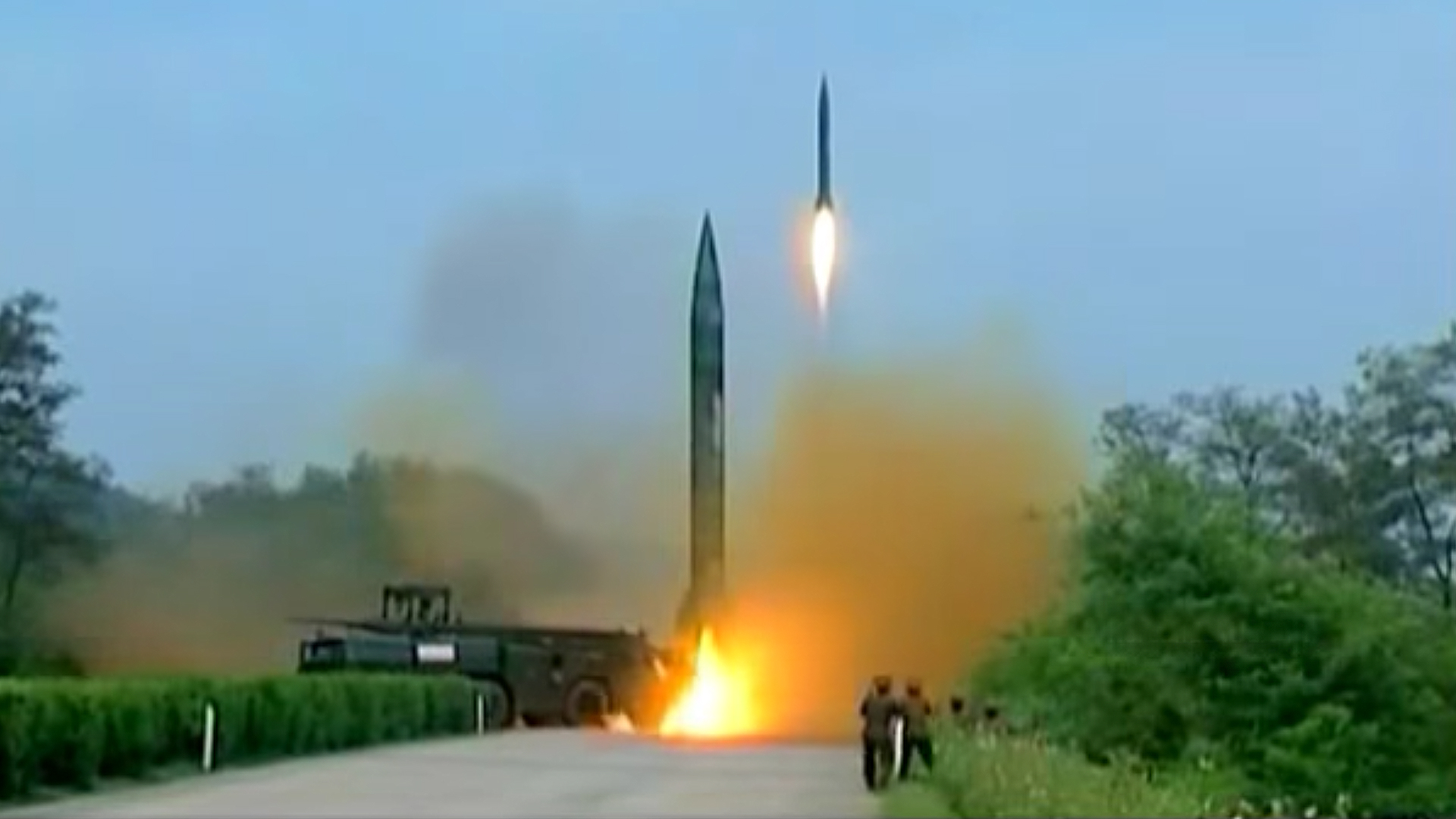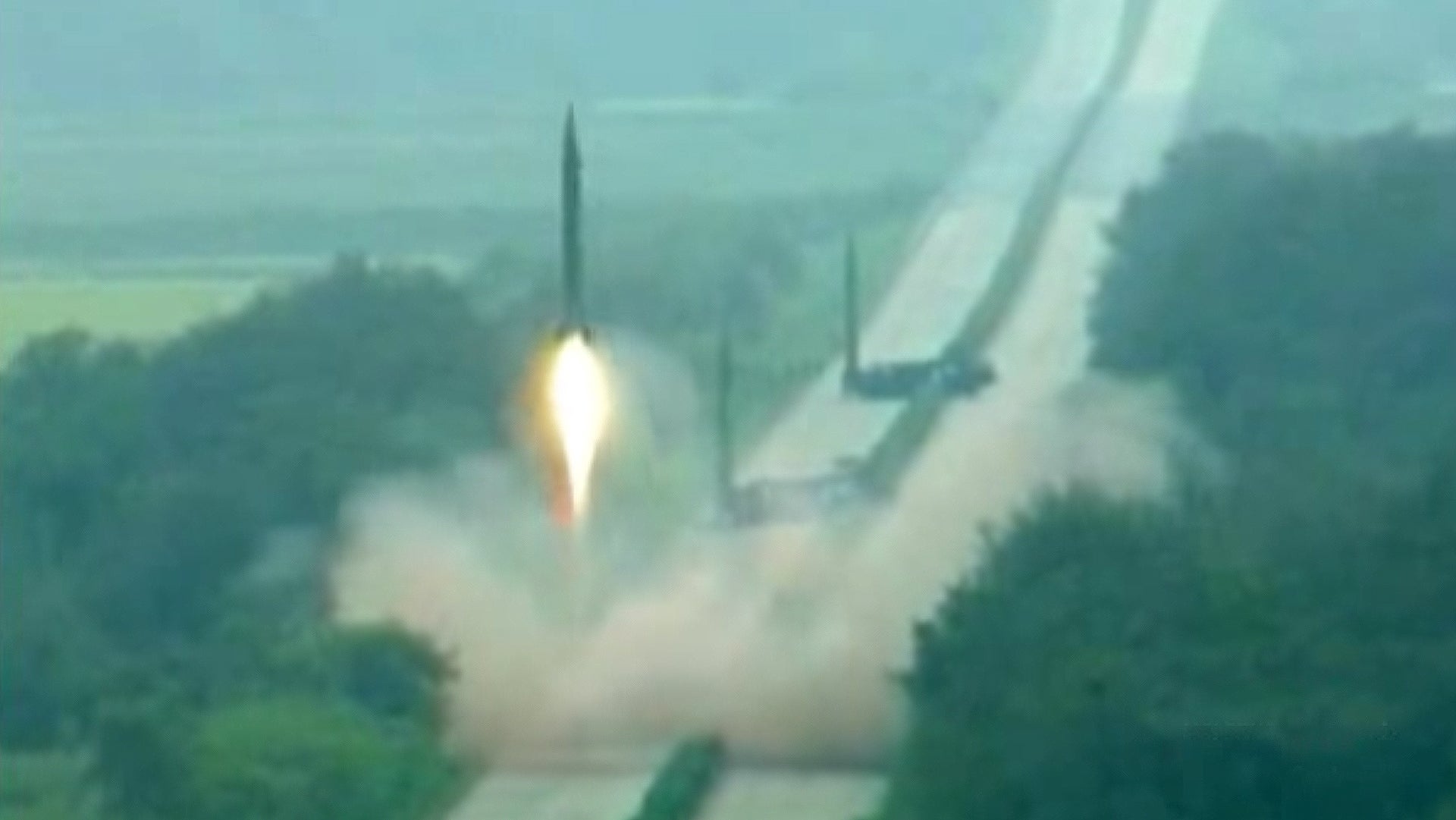Pyongyang’s ballistic missile capabilities are reaching new heights. This week, as the G20 Summit was underway in Hangzhou, China, North Korea launched a trio of ground-mobile Nodong-1 medium-range ballistic missiles in quick succession.The missiles flew 620 miles south, deep into Japan’s air defense identification zone in the Sea of Japan.

The launch of three medium-range ballistic missiles, nearly at once, was not only a typical geopolitical cry for attention, but also a signal that North Korea could intend to saturate America’s single forward-deployed Terminal High Altitude Area Defense (THAAD) anti-ballistic missile battery during a time of war.
The exact limitations of THAAD’s simultaneous engagement capabilities are not exactly clear, although it is safe to say that a single battery likely will not be able to contend with a large salvo of missiles fired all at the same time, and especially not multiple salvos launched in quick succession.

Still, North Korea’s liquid-fueled ballistic missiles are vulnerable to preemptive strikes during their fueling stage. Successfully doing so would require that aerial surveillance assets with high-resolution ground moving target indicator (GMTI) radar are present and aircraft or missiles are available to quickly be vectored in for an attack. If North Korea were to strike without warning, it is unlikely that these assets would be in place to detect and neutralize even a portion of the threat quickly enough to forestall a mass launch from multiple locations across the North Korean frontier.
The limitations of liquid-fueled ballistic missiles have helped keep North Korea’s capabilities “in a box” for decades, but now the Hermit Kingdom is making great strides in solid-fueled missiles. The successful test of a submarine-launched NK-11 just two weeks ago is proof that this technological limitation is no longer the barrier it once was for the North Koreans.
As North Korea’s new solid-fuel rocket capabilities migrate to ground-mobile missile systems, they will be able launch far quicker than they can today with liquid-fueled missiles like the Nodong-1. This will make striking these missiles on their transporter-erector-launchers (TELs) while they are in the open and being prepared for launch much harder, even with the help of cutting-edge surveillance systems and armed fighters and missiles on standby.
As for the utility of America’s single THAAD battery located in the southern portion of South Korea, its defensive capabilities were already put into question last month following North Korea’s submarine-launched ballistic missile test. Once fully operational, North Korea could launch from the sea, outside the azimuth of coverage that THAAD provides. Additionally, a missile’s range can be sacrificed for a very steep trajectory and high-speed flight profile, which THAAD is not known to have been tested against.

This has prompted calls for the deployment of at least one additional THAAD battery in the region. Combined with the existing system, it could help to cover the sea approaches to South Korea off North Korea’s coasts. There has been no official word if this is something the US is seriously considering, although as Washington comes to terms with North Korea’s rapidly increasing ballistic missile strike capabilities, expect more anti-ballistic missile capabilities to be deployed to the region as a counter-balance. A move that China will not be happy about.
Contact the author Tyler@thedrive.com
